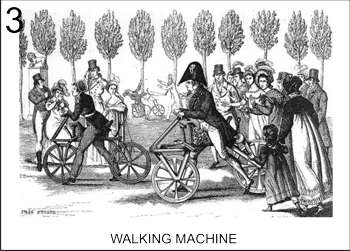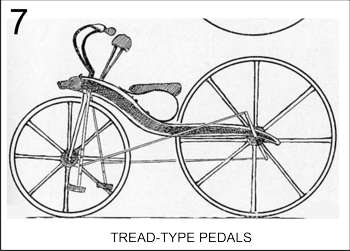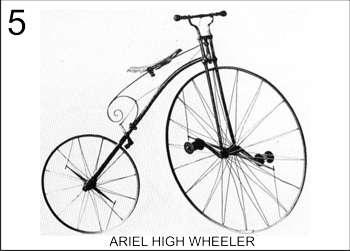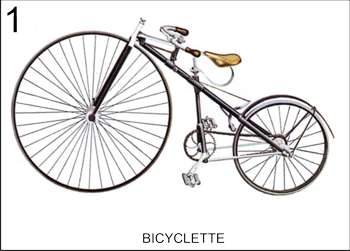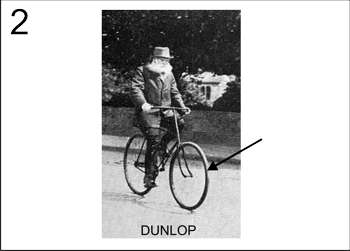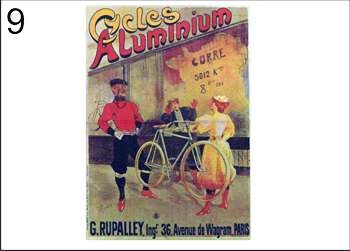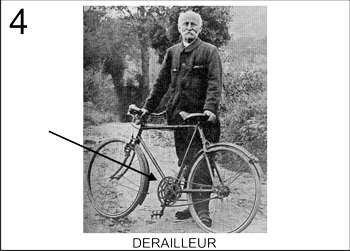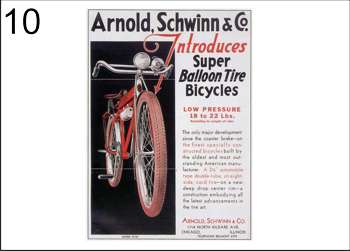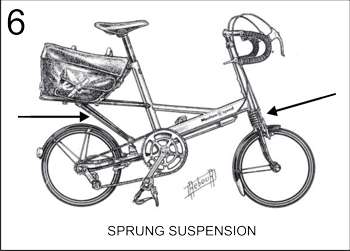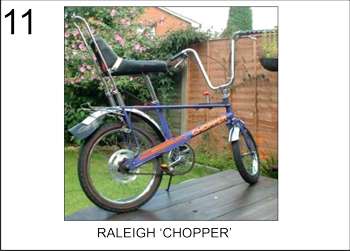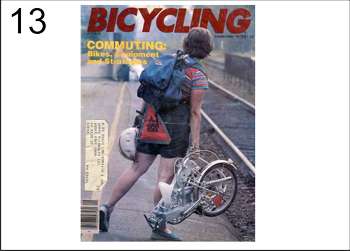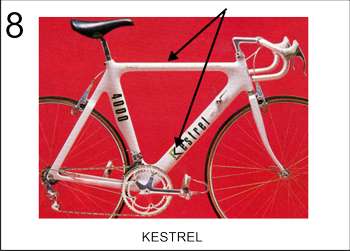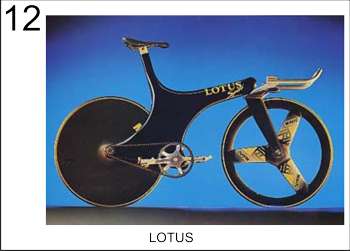| CLICK HERE FOR INDEX PAGE | |
| HISTORY OF BICYCLES - ANSWERS | |
| V. Ryan © 2005 | |
|
You were asked to look carefully at the pictures / photographs of the series of bicycles. Print them out and arrange them in order on your desk, the earliest to the most modern. Each photograph is numbered. You should have written down the number of the bicycle alongside the dates written on the following sheet, and explained why you have placed each bicycle alongside each of the dates. HINT - the bicycle with the most basic technology should be the alongside 1817. As you progress down the list each bicycle should be more complex or have improved technology. The answers are shown below in chronological order. |
|
|
|
|
|
In 1817 Baron von Drais invented a walking machine that would help him get around the royal gardens faster: two same-size in-line wheels, the front one steerable, mounted in a frame which you straddled. The device was propelled by pushing your feet against the ground |
|
|
|
|
|
Kirkpatrick Macmillan 1839 is traditionally credited with a machine in which power was supplied to the back wheel via rods connected to treadle-type pedals. |
|
|
|
|
|
James Starley 1870 produces the “Ariel” High Wheeler ( “Ordinary” or “Penny Farthing”). Later versions had front wheel sizes of up to 5 feet. |
|
|
|
|
|
1879 - Henry J. Lawson patents a rear wheel, chain-driven safety bicycle, the “Bicyclette” (his earlier models were lever driven). |
|
|
|
|
|
1888 Commercial development of the pneumatic bicycle tire by Dr. John Boyd Dunlop. |
|
|
|
|
|
1890s ‘Cycles Aluminium’ (France) becomes one of the earliest manufacturers of an aluminium bicycle. |
|
|
|
|
|
1910 - The first, easy-to-use derailleur is invented by Paul de Vivie (Velocio) that shifted among four gears at the pedals. |
|
|
|
|
|
1938 - ‘Rugged Bike’ - Introduction by Schwinn of the balloon tire and “streamlined” bikes which leads to rugged bikes that can take the abuse of teenage boys and which set a forty-year trend. |
|
|
|
|
|
1962 ENGLAND - Launch of the Moulton small-wheeled bicycle with separately sprung suspension and custom tires. Competed successfully in time trials and track pursuit events. |
|
|
|
|
|
Raleigh - 1968 - a radical design for boys, based the 'easy rider' type of motor bike. |
|
|
|
|
|
1970 ENGLAND - The aluminium Bickerton portable small-wheeler is developed. Followed by the successful Brompton in 1976 and Dahon in 1980. |
|
|
|
|
|
1986 - Kestrel (USA) introduces their production non-lugged, carbon fibre frame and Trek market their first lugged carbon frame. |
|
|
|
|
|
1992 - lotus. Advanced composite with minimum-drag aerodynamic cross-sections, formed with unidirectional and stitched high-strength carbon fibre in an epoxy resin matrix. Titanium inserts are incorporated at the load-bearing points. |
|
|
|
|
